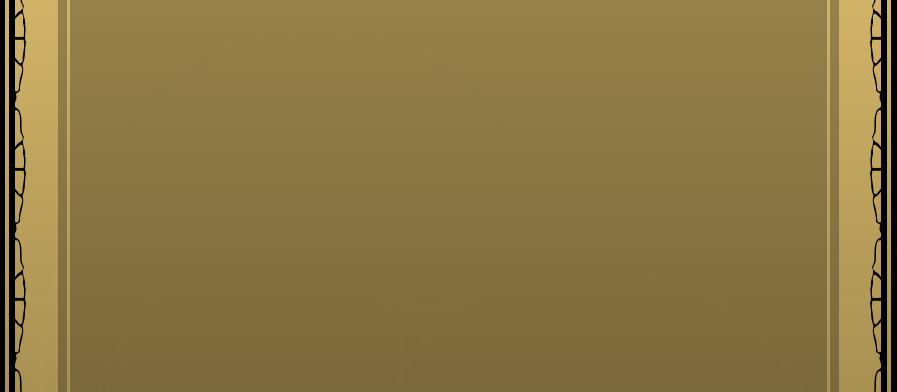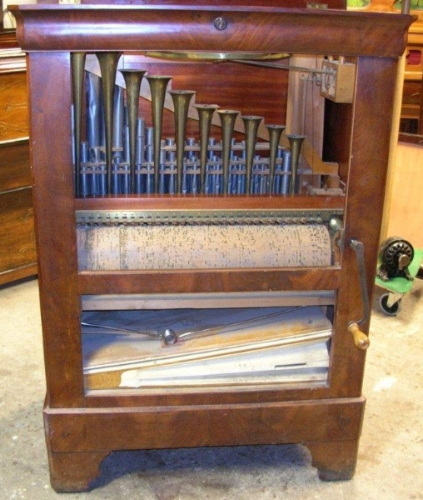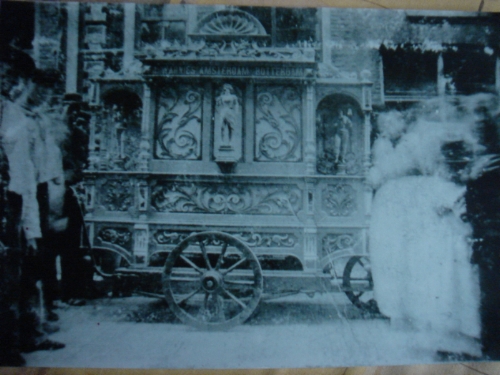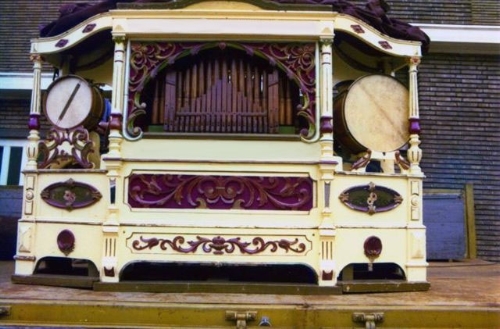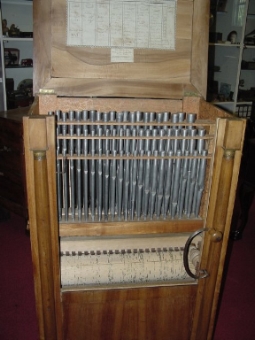-
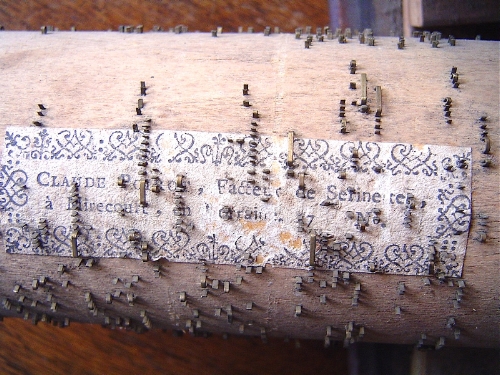 Détail de cylindre d'une serinette Claude Poirot
Détail de cylindre d'une serinette Claude Poirot -
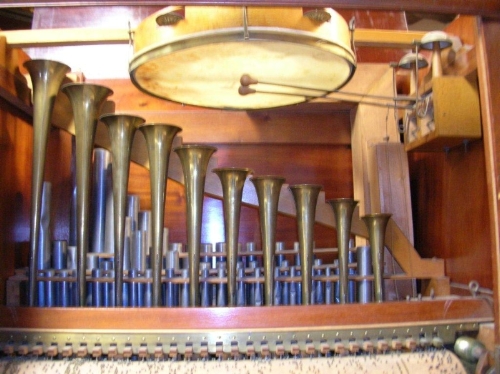 Rhône (69). Détail de l'orgue de salon N° 1357. Orgue à vendre. Photo: G. Décoret
Rhône (69). Détail de l'orgue de salon N° 1357. Orgue à vendre. Photo: G. Décoret -
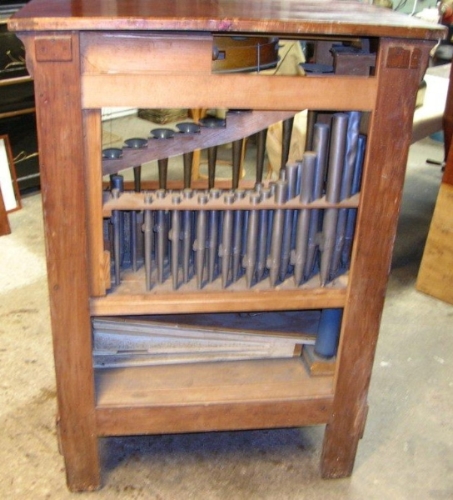 Rhône (69). Arrière de l'orgue de salon N° 1357. Orgue à vendre. Photo: G. Décoret
Rhône (69). Arrière de l'orgue de salon N° 1357. Orgue à vendre. Photo: G. Décoret -
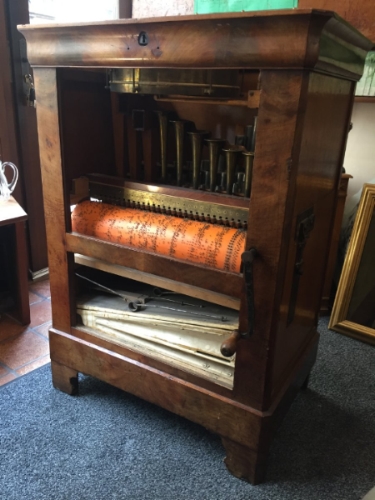 Orgue Thibouville Lamy (1). Photo: Massimiliano Granaiola
Orgue Thibouville Lamy (1). Photo: Massimiliano Granaiola -
 Orgue Thibouville Lamy (2). Photo: Massimiliano Granaiola
Orgue Thibouville Lamy (2). Photo: Massimiliano Granaiola -
 Orgue Thibouville Lamy (3), carte des airs. Photo: Massimiliano Granaiola
Orgue Thibouville Lamy (3), carte des airs. Photo: Massimiliano Granaiola -
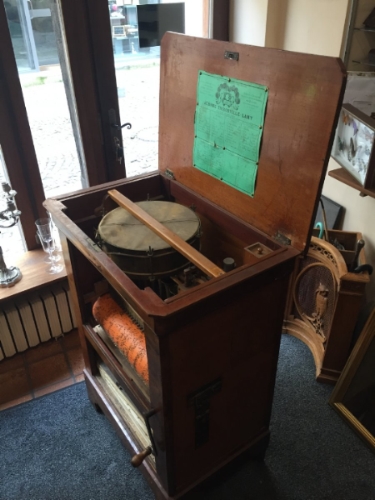 Orgue Thibouville Lamy (4). Photo: Massimiliano Granaiola
Orgue Thibouville Lamy (4). Photo: Massimiliano Granaiola -
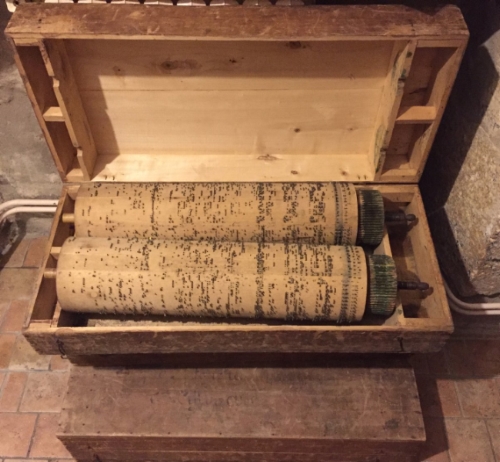 Orgue Thibouville Lamy (4). Caisses et 6 cylindres. Photo: Massimiliano Granaiola
Orgue Thibouville Lamy (4). Caisses et 6 cylindres. Photo: Massimiliano Granaiola -
 Serinette Poirot l'Ainé - Photo: Musik- & Teatermuseet, Stockholm.
Serinette Poirot l'Ainé - Photo: Musik- & Teatermuseet, Stockholm. -
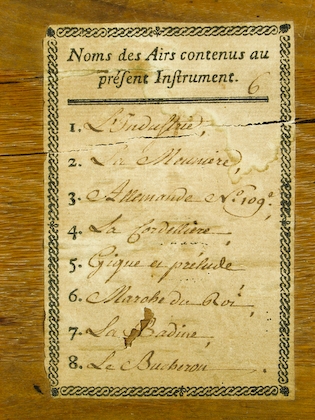 Serinette Poirot l'Ainé - Photo: Musik- & Teatermuseet, Stockholm.
Serinette Poirot l'Ainé - Photo: Musik- & Teatermuseet, Stockholm. -
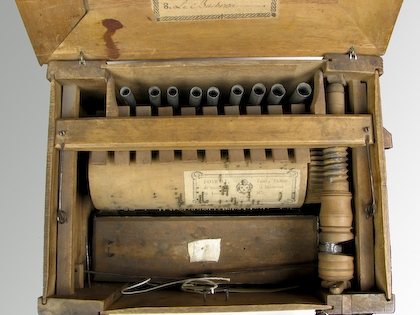 Serinette Poirot l'Ainé - Photo: Musik- & Teatermuseet, Stockholm.
Serinette Poirot l'Ainé - Photo: Musik- & Teatermuseet, Stockholm. -
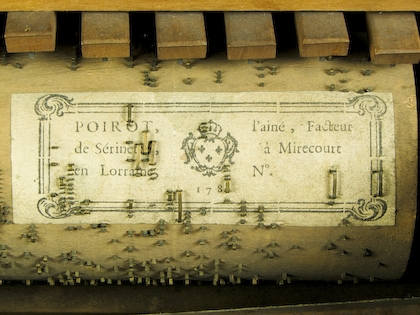 Serinette Poirot l'Ainé - Photo: Musik- & Teatermuseet, Stockholm.
Serinette Poirot l'Ainé - Photo: Musik- & Teatermuseet, Stockholm. -
 L'orgue suivant est attribué à Nicolas Poirot selon ce document mais sans certitude étant donnée qu'aucune inscription ne figure sur l'orge
L'orgue suivant est attribué à Nicolas Poirot selon ce document mais sans certitude étant donnée qu'aucune inscription ne figure sur l'orge -
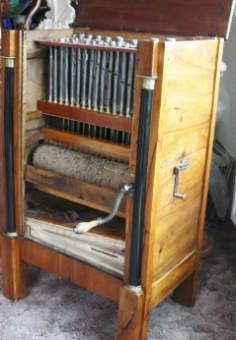 suite
suite -
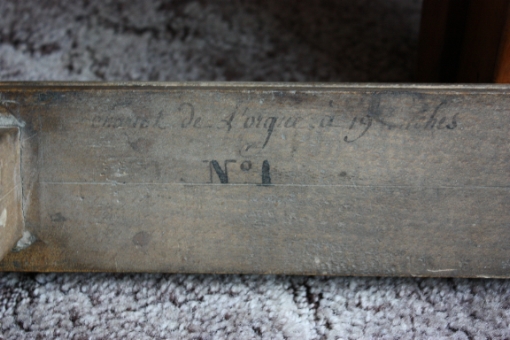 suite
suite -
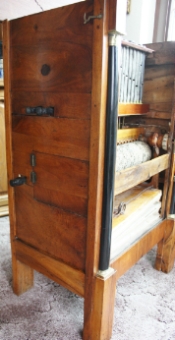 suite
suite -
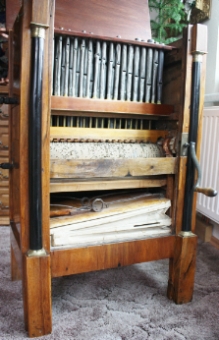 suite
suite -
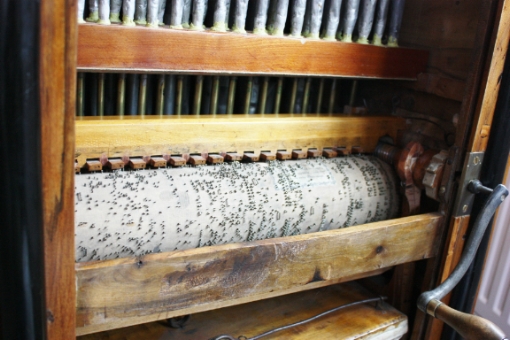 suite
suite -
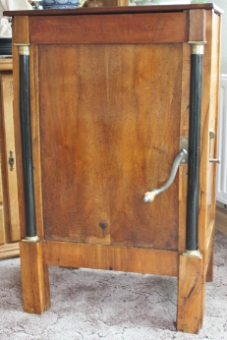 suite
suite -
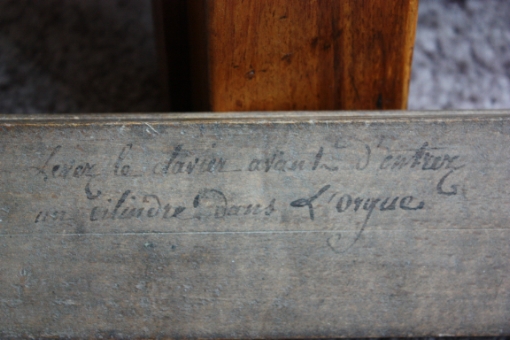 suite
suite -
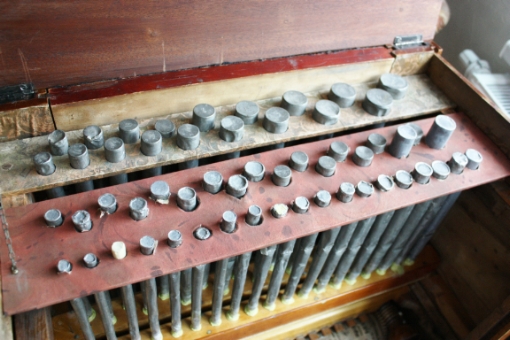 suite
suite -
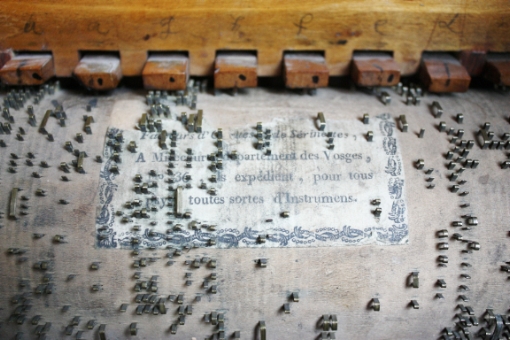 suite
suite -
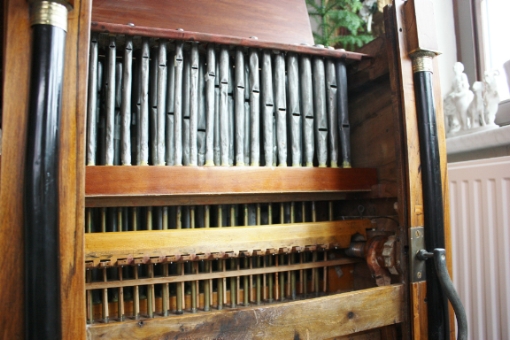 suite
suite -
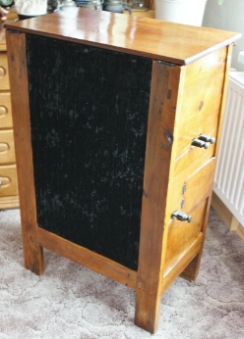 suite
suite -
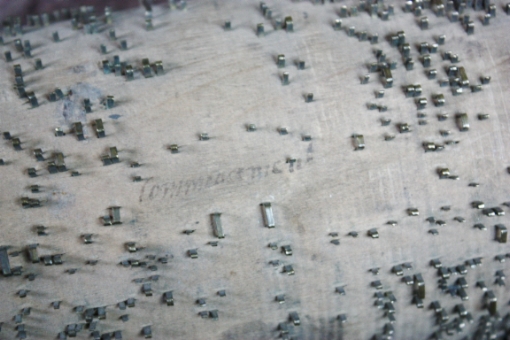 suite
suite -
 The organ was then used on this fairground-attraction (Bumpercars) – 1921. Photo by courtesy of Herman Riddering - Holland
The organ was then used on this fairground-attraction (Bumpercars) – 1921. Photo by courtesy of Herman Riddering - Holland -
 Orgue LIMONAIRE FRERES N°3586 Le Voltigeur construit à Paris en décembre 1904 - réparation par Poirot Frères avril 1952. Photo J. Collomb
Orgue LIMONAIRE FRERES N°3586 Le Voltigeur construit à Paris en décembre 1904 - réparation par Poirot Frères avril 1952. Photo J. Collomb -
 Inscription trouvée à l'intérieur de la boîte à touches de l'orgue LIMONAIRE FRERES N°3586 Le Voltigeur. Inscription vraissemblablement de la main de Georges Poirot. Photo J. Collomb.
Inscription trouvée à l'intérieur de la boîte à touches de l'orgue LIMONAIRE FRERES N°3586 Le Voltigeur. Inscription vraissemblablement de la main de Georges Poirot. Photo J. Collomb. -
 Very nice case in walnut presenting Empire French style. Cylinder 60 x 12 cm. Antique Mechanical Music Instruments, Swizerland. Photo: Hanspeter Kyburz
Very nice case in walnut presenting Empire French style. Cylinder 60 x 12 cm. Antique Mechanical Music Instruments, Swizerland. Photo: Hanspeter Kyburz -
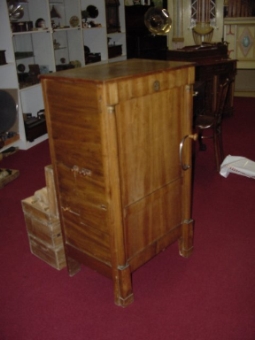 Salon organ. Antique Mechanical Music Instruments, Swizerland. Photo: Hanspeter
Salon organ. Antique Mechanical Music Instruments, Swizerland. Photo: Hanspeter -
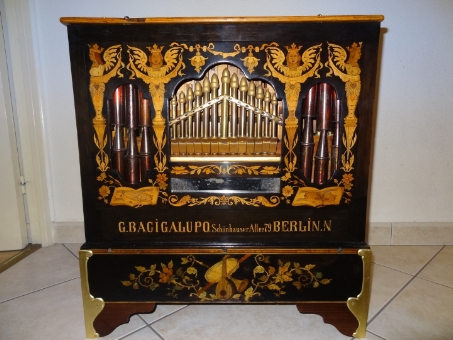 Orgue Bacigalupo avec cylindre Poirot Frères.
Orgue Bacigalupo avec cylindre Poirot Frères. -
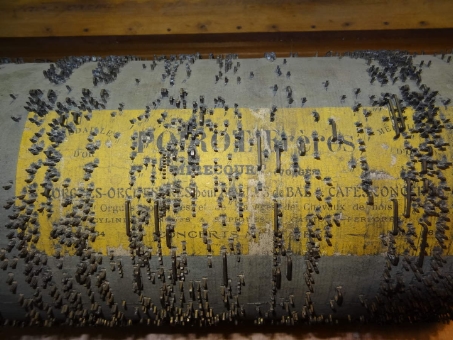 Détail du cylindre.
Détail du cylindre. -
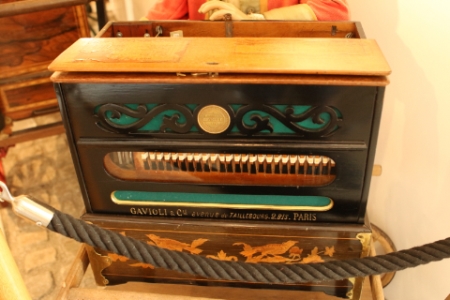 Orgue Gavioli avec cylindre Poirot Frères. Musée des Gets. Photo B. Poirot
Orgue Gavioli avec cylindre Poirot Frères. Musée des Gets. Photo B. Poirot -
 Détail du cylindre.
Détail du cylindre.

| Orgues autres |
 |

